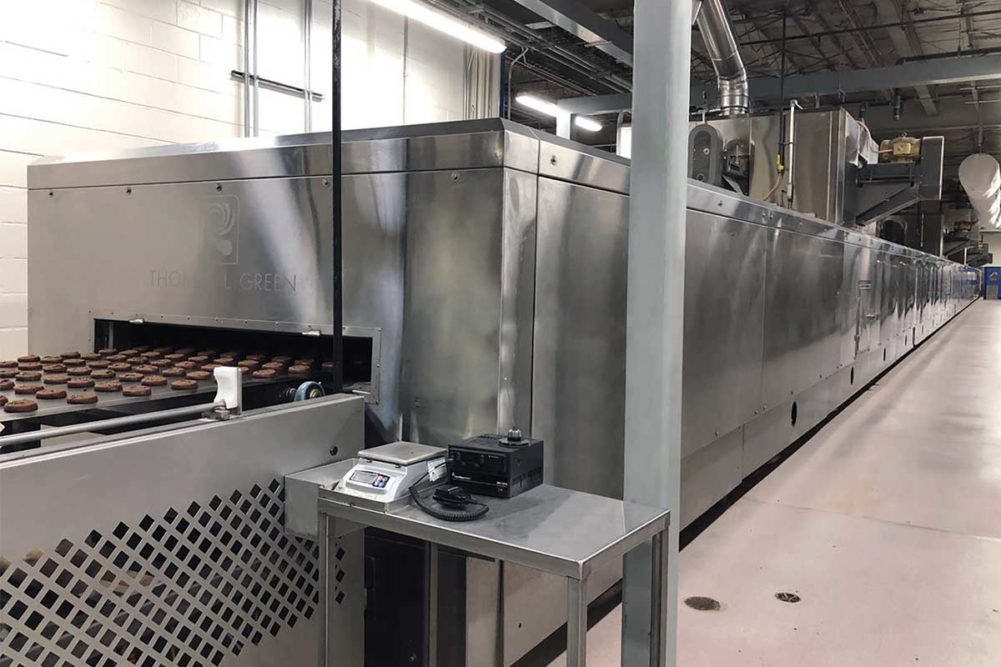Don’t worry. The government isn’t taking away your gas stove anytime soon. However, pending local regulations, the global groundswell toward clean energy and burgeoning sustainability initiatives are reigniting the interest in thermal electric heat for commercial baking ovens.
Specifically, wholesale bakeries around Los Angeles will be required to replace their natural gas-fired ovens that are more than 22 years old with electric ovens or other low nitrogen oxide (NOx) burners by 2027, according to a proposed rule by the South Coast Air Quality Management District (SCAQMD) Governing Board.
If the proposal is enacted, the major concern is that the movement in Southern California could spread to other regions throughout the nation.
The issue begs several questions: How viable are electric ovens as an alternative to affordable natural gas alternatives? Can they produce the same wide variety of baked goods with comparable quality and at existing high volumes? Can the local power grid or infrastructure within bakeries support the switch?
And perhaps the biggest question of them all: Will the EO, or electric oven, become the EV, or electric vehicle, of baking? That depends on a host of factors that determine if an electric or a hybrid combination of electric and fossil fuel thermal heat fits into a bakery’s operation.
Consider the benefits of lifting the peddle off the gas and converting to electric heat.
“In terms of advantages, the design of electric ovens, which do not require gas piping or venting systems, makes operations simple and might reduce installation and maintenance costs,” said Nicola Menardo, president of TP Food Group, North America. “During the oven startup phase, electric ovens that feature specific systems for heat modulation allow simple and precise temperature controls.”
He added that electric ovens can reduce carbon footprints compared with gas-fired ovens if electricity is generated from renewable energy sources.
Moreover, operational cost savings are possible in those countries where electricity is cheaper than gas, but there are some other issues to consider.
“In terms of limitations, electric ovens can drive electricity absorption loads, and not all baking facilities have the tools to cope with this,” Mr. Menardo said. “In our experience, electric ovens do not reach the values of radiating heat attainable with diathermic oil ovens. The lower flexibility in radiant heat adjustment might then reduce the mix of products that one can bake. Gas prices cheaper than electricity costs erode the potential cost benefits of electric ovens.”
Many companies offer a panoply of alternatives. Reading Bakery System (RBS), for instance, provides an electric option for its convection ovens.
“Customers can easily exchange their gas penthouses with electric penthouses,” said Tyler Martin, R&D engineer, baking systems, RBS. “The opportunity with electric heating is carbon-neutral energy. The challenges we see with this type of heat include higher initial and operational costs, slightly longer heat-up and response times and the need for more power than is currently available.”
Auto-Bake Serpentine also offers an electric retrofit of its gas-fired convection oven. This allows bakers to purchase a new gas-fired oven today, then transition it in the future, noted Scott McCally, president of Auto-Bake Serpentine, Hinds-Bock and Inline Filling Systems, all part of Middleby Bakery.
“The immediate reaction from bakers has been for original equipment manufacturers to consider hybrid gas-and-electric systems that use gas-fired burners to heat up the system initially or to aid a quick response to an immediate and substantial load,” he said. “During production, however, electric heat is the primary energy source. The benefits include a reduction of fossil fuel usage and potentially a reduction in the bakery’s daily energy costs.”
However, Mr. McCally added, this response to the current environment would be temporary, and he provided a reason why bakers might consider the switch to all electric.
“Elimination of fossil fuel usage is inevitable; the only question is when and where the regulators will mandate the transition,” he explained. “In 2023, bakers should be considering electric ovens for any asset that will be depreciated for more than seven years. Given that the useful life of a bakery oven can be more than 20 years, it makes sense for bakers to get the most from their existing ovens and then replace them with a new electric oven within the next seven years.”
While many regulatory questions and operational challenges remain when it comes to sustainability, the opportunities are almost electrifying with the current and emerging advances in emission-controlling and energy-saving technology for ovens.
This article is an excerpt from the August 2023 issue of Baking & Snack. To read the entire feature on Ovens, click here.






